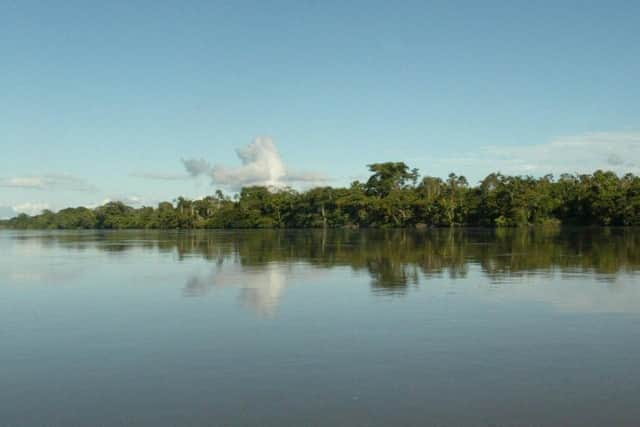Book review: Gathering: Women of Colour on Nature, edited by Durre Shahwar and Nasia Sarwar-Skuse
Up until a couple of weeks ago, I would probably have claimed to have read a “wide range” of writing about nature. Obviously it’s a vast topic, but over many years of reviewing books for The Scotsman and Scotland on Sunday, I’ve ticked a lot of the constituent boxes.
Back in the Noughties, I seem to have taken a particular interest in books about climate change, from urgent calls to action like Mark Lynas’s Six Degrees (2007) and James Lovelock’s The Vanishing Face of Gaia: A Final Warning (2009) to more reflective assessments of what a globally warmed world might feel like such as Marek Kohn’s Turned Out Nice and Laurence C Smith’s The New North (both 2010). I’ve reviewed books focusing on specific creatures, like Jim Crumley’s Nature’s Architect: The Beaver’s Return to Our Wild Landscapes (2015) and books exploring whole ecosystems, such as Tim Flannery’s Here on Earth: A New Beginning (2010). From about 2012, when I reviewed Robert Macfarlane’s The Old Ways, I seem to have spent a lot of time tracking down examples of so-called “new nature writing” (broadly speaking: writing about nature that manages to be at once literary and at least somewhat scientific) and more recently there have been various books about landscape, such as James Crawford’s Wild History and Dougie Strang’s The Bone Cave (both 2023).
Advertisement
Hide AdBut there are “wide ranges” and then there are wide ranges, and perceptive readers will have noticed that the above list consists entirely of books by white, male authors. True, if I hadn’t been trying to make a point I could have added a few women to that list – Linda Cracknell, Anna Fleming, Jean Sprackland and Fiona Stafford spring to mind – but there’s no getting away from it: as far as I can tell, in the last couple of decades every single “nature book” I’ve reviewed has been written by a white author, and a significant majority of those have have been written by men.
Why does this matter? In the introduction to their new book Gathering: Women of Colour on Nature (404Ink, £10.99), editors Durre Shahwar and Nasia Sarwar-Skuse write: “A cursory glance in any bookshop or library reveals that books on nature and climate crisis are predominantly written by white authors, while writers of colour are often overlooked. Yet the impact of the climate crisis is felt keenly by marginalised communities worldwide, particularly in the Global South.” It is this absence, they continue, “and the desire to amplify nature writing by women of colour, that led to the creation of this anthology.”
Clearly, if you only ever read books on a given subject by one demographic group, you will only ever be able to understand the subject from that perspective. The obvious question, then, is what fresh insights can be gleaned from the writers gathered together in this anthology? The answer? Many – far too many, in fact, to enumerate in a space as short as this. However, there are certain perspectives which seem particularly noteworthy and, as far as I can remember, don’t feature in any of the nature books sitting on my shelves.
In her essay “The Nature of White Sustainability”, Sharan Dhaliwal argues that “white sustainability… ignores those at the frontlines of harm, it continues theft and it forwards the rhetoric of white saviourism.” She writes of the indigenous people living in the forests of Yasuni in Ecuador, the most biodiverse place on Earth – “This land lives peacefully with the people who move within it” – and she wonders why, “if capitalism had a big hand in creating this crisis, then when saving the land, should they not turn to those who consumed gently to become the leaders of change?”
Closer to home, one theme that crops up in multiple essays is how unwelcome women of colour often feel in the British countryside. In her essay “A British-Ghanaian in the West Country”, Louisa Adjoa Parker writes of the racism she experienced growing up in rural Devon: “My face looked wrong against this rural backdrop... people like me, I was told, belonged in cities.”


Most thought-provoking of all, perhaps, is a line in Taylor Edmonds’s essay “I Walk, the Sea Rises”, in which she is steeling herself for her first solo hike in Wales. “Slowly, I unlearn what I thought hiking was; double-digit mile walks and conquering mountains, the origins of which are rooted in colonialism and white supremacy.”
Advertisement
Hide AdQuestioning the validity of “conquering” mountains isn’t new (see Nan Shepherd) and the ugly, racist side of mountaineering history will be familiar to anyone who has read up on the British Everest Expedition of 1953. Putting these two things together, though, raises uncomfortable questions about the still largely results-driven world of Western-style outdoor recreation. What are you trying to prove by doing that? And, culturally, where did the desire to do it come from? Important to try and see ourselves as others see us, even (or perhaps particularly) when we don’t like what we see.
Gathering: Women of Colour on Nature, edited by Durre Shahwar and Nasia Sarwar-Skuse, 404Ink, £10.99
